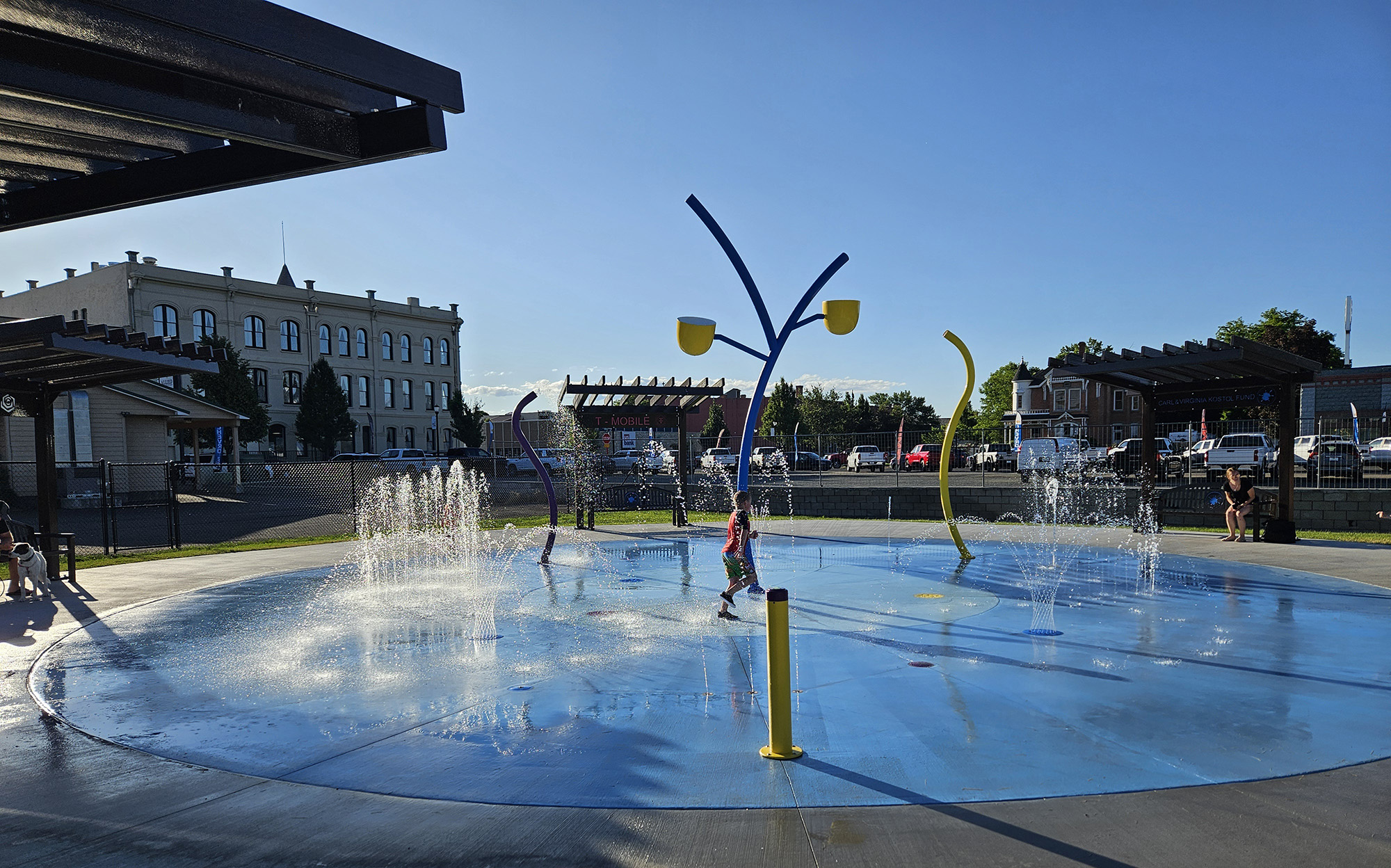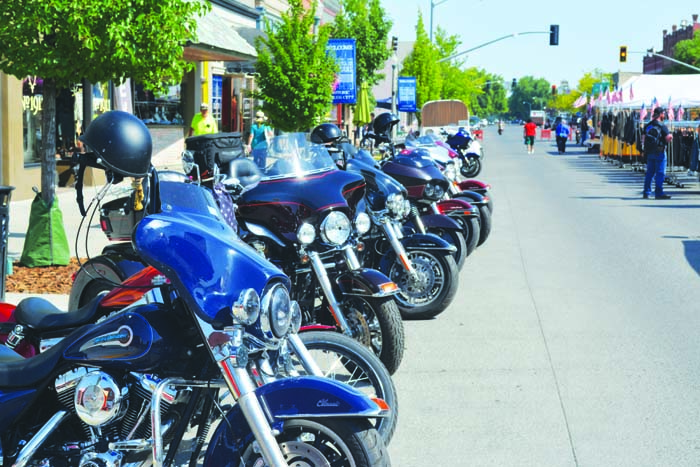The enduring magic of a mountain pass
Published 12:30 pm Friday, December 9, 2022
Mountain passes are my favorite landforms.
The very word — pass — evokes a sense of mystery, the possibility that something exciting and unexpected will happen during the journey.
Because it’s not merely a journey.
It’s a passage.
This notion of passing from one place to another is, I think, inherently intriguing.
I like too that these physical divisions have yielded such a rich lexicon, much of it with the piquancy of local vernacular.
We have a litany of words to describe the spot that separates one side of a mountain peak or range from another.
In the Alps you might ascend through a col.
In the Appalachians your route among the high country could take you through a gap, as in Virginia’s Cumberland.
The cartography of the White Mountains of New Hampshire is lousy with notches.
Northeastern Oregon is pass country, for the most part, a notable exception being the northern part of the Elkhorns, where saddle shows up a few times, at Dutch Flat and Cunningham and Cracker.
Defile is far less common, but I rather like the word. It has a certain sense of danger, it seems to me, probably because I associate it with the related military term “defilade,” meaning a place that’s protected from enemy fire.
Some passes are truly gaps or notches, with the modest dimensions those words suggest — places scarcely large enough to admit the passage of a nimble, and less than corpulent, alpinist.
But many of the passes that remain prominent travel routes today, long since the advent of the train and the automobile, are much broader, and as such less dramatic.
An extreme example is South Pass along the Oregon Trail in Wyoming.
I visited the historic site a few years ago and, as many emigrants and other observers have noted, the pass is so indistinct, amid the relatively gentle topography, that it’s not obvious when you’ve reached the crest.
Notch, as applied to South Pass, would be egregiously inappropriate.
But that word nicely captures many of the passes on the grand network of hiking trails in the Eagle Cap Wilderness.
It is in my estimation the greatest collection of passes in Oregon. The names have over the years assembled themselves into a mental list, one I can conjure as easily as the tracks on a favorite album such as Def Leppard’s “Pyromania.”
Horton and Hawkins and Frazier and Wonker and Ivan Carper and, most stirring of all, Polaris — they all epitomize the concept of a pass as a distinct transition, the sort of place where I feel a strong compulsion to pause, to briefly ease the strain on the legs and lungs after the ascent, but also to acknowledge the achievement. In that way climbing a high pass is not so different from summiting a peak.
Yet my favorite Oregon pass, were I forced to make such a distasteful choice, must be the McKenzie.
Its combination of history and grandeur is for me unmatched.
I had occasion recently to drive through the pass for the first time in at least a decade.
The experience had lost none of its potency in the meantime.
I have since I was a young boy harbored a fascination with the McKenzie Pass. The inspiration, so far as I can remember, was reading Ralph Friedman’s “Oregon For the Curious,” one of the treasures in Oregon’s bibliography.
The book was first published in 1966, and my parents had a copy — a gift, I believe, from my maternal grandfather, Edmund Klecker.
Friedman’s description of the McKenzie Pass, which I must have read before I actually made the trip, earned the book its title, since I was decidedly curious.
But he didn’t oversell it.
The McKenzie Pass was one of the earliest routes by which wagons, pulled by horses or oxen, crossed the central part of the Cascade Mountains. It is named after the river that flows west through the foothills, merging with the Willamette River just north of Eugene.
The pass is quite unlike any of the other trans-Cascade highways, as its summit is distinguished not by a dense forest, as at the Santiam or Willamette passes, but rather by stark expanses of black basalt where hardly any trees grow.
It is a peculiar fact of history that people hacked a road across the McKenzie, despite the tortuous terrain and unyielding lava, in 1871, well before the easier routes to the north and south were blazed.
When the paved highway was completed in 1925, the McKenzie Pass was the only true auto route across the Central Cascades.
Within a few decades, though, it had been largely supplanted by the Santiam and Willamette passes, with their comparatively gentle grades and much straighter highways.
There is nothing gentle or straight about the McKenzie Pass. Few roads in Oregon are more stubbornly twisty as Highway 242 (the Dooley Mountain Highway south of Baker City being a prime competitor for the title of road most likely to provoke puking).
The most notorious section of the McKenzie Pass highway — and naturally the one that had me enthralled every time I read the passage in Friedman’s book — is Deadhorse Grade. The roughly 5-mile stretch, on the steeper, western side of the pass, switchbacks through the fir and hemlock forest — a riot of curves where only a foolhardy driver will exceed 30 mph, and then only briefly.
Even when the McKenzie Pass was the major auto route across the Central Cascades it was open only part of the year.
You needn’t have experience driving a snowplow — and I haven’t any — to understand implicitly that keeping the highway cleared, particularly the several miles where it weaves among the lava flows, would be daunting.
In places the road is scarcely wide enough to admit the passage of a modern snowplow blade. And with basalt walls on both sides I suspect only a blower could deposit the snow safely distant.
And snow is no minor impediment in these parts.
The McKenzie, which tops out at 5,325 feet, is notably more elevated than the Santiam (4,817) and Willamette (5,128). Snow can accumulate to depths of 10 feet or more.
Most years the Oregon Department of Transportation closes the snow gates on the McKenzie Pass in late October or early November, and it doesn’t reopen until the next June, often as not.
The McKenzie became in effect a tourist road in 1962, when ODOT opened the Clear Lake cutoff, which links Highway 126 from Eugene to Highway 20, which crosses the Cascades at Santiam Pass and continues east to Sisters, the eastern terminus of Highway 242 (the western end is near McKenzie Bridge).
The drive remains not just a trip, but an experience.
The lava flows, the unrivalled vistas of the Three Sisters, Mount Washington, Three Fingered Jack and Mount Jefferson, the nervous moments when you meet another car — all combine to make this the sort of memorable drive that is the antithesis of freeway travel.
It’s as well that cell coverage is spotty on the McKenzie.
This is no place to even have a hands-free conversation.
As for texting. … basalt does not budge.







